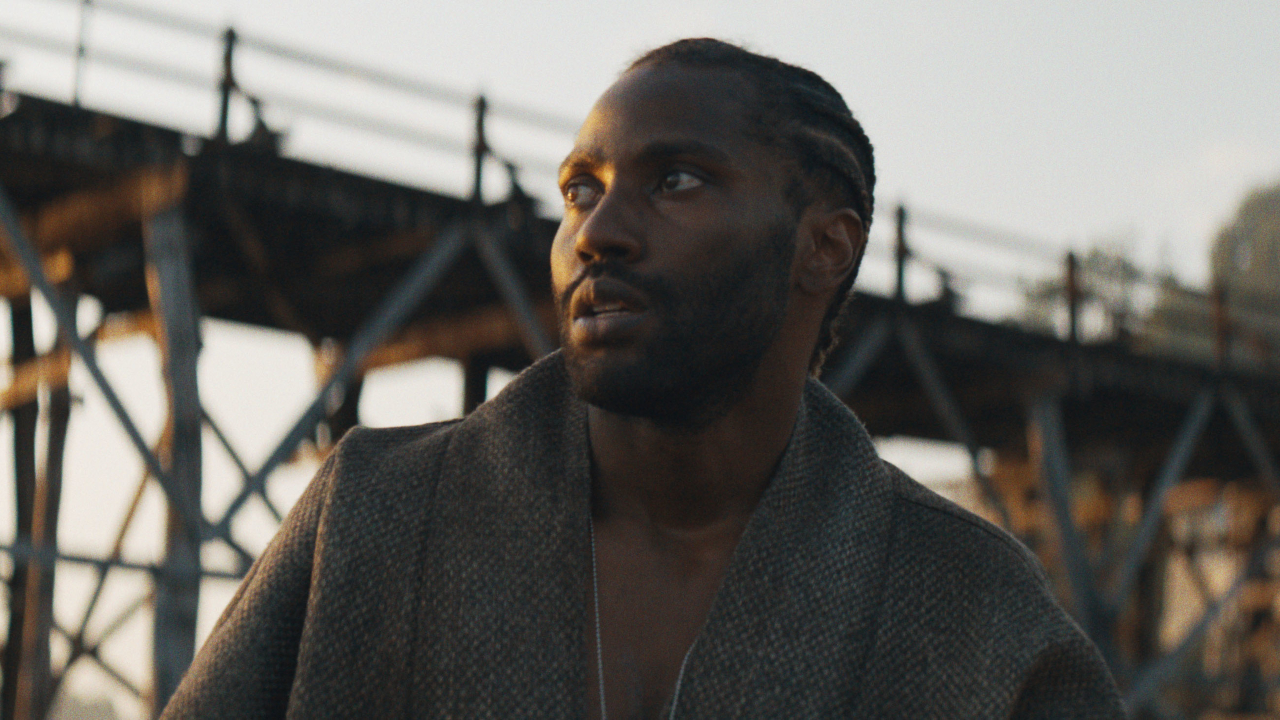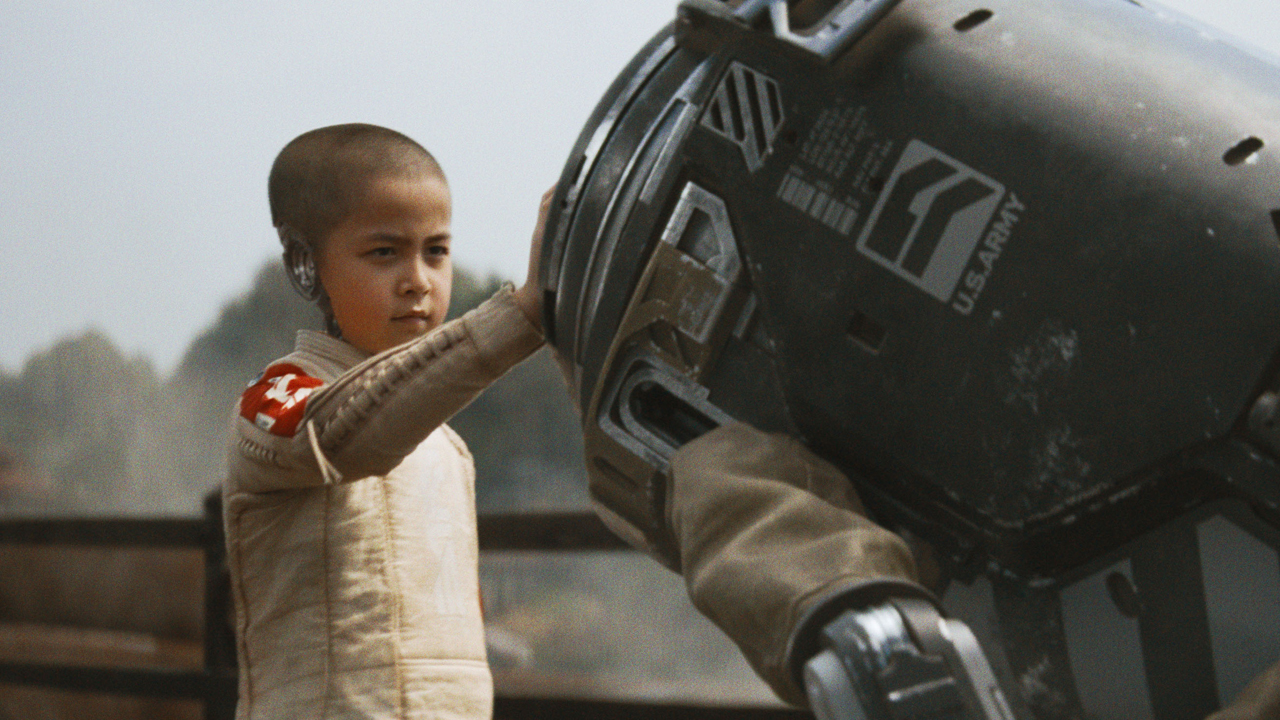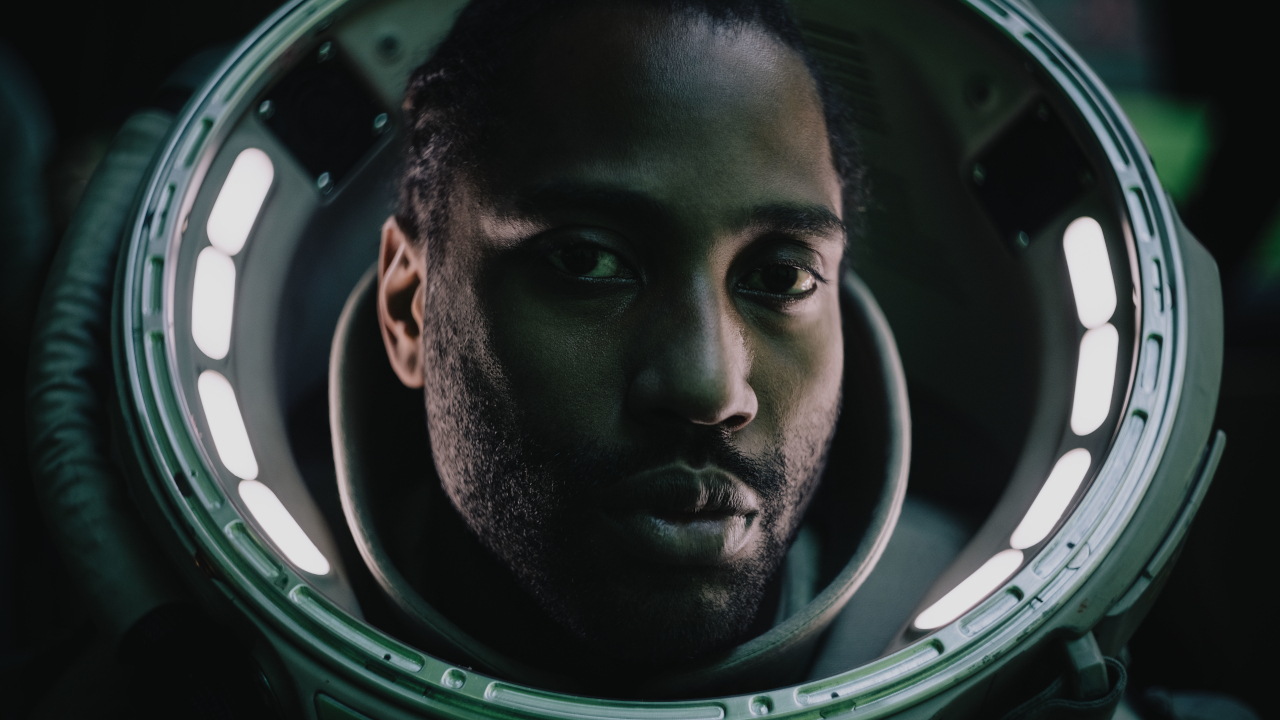What do you traditionally think of when someone mentions the concept of a camera meant to shoot sci-fi movies like The Creator? Behind-the-scenes featurettes, and even movies about the film industry, have conditioned us to imagine behemoths that can either sit on guided tracks, or perch upon an operator’s shoulder. However, on The Creator, they were able to expand their coverage by using a camera that’s readily available to anyone.
With Gareth Edwards’ return to directing, he and directors of photography Greig Fraser and Oren Soffer developed an innovative rig that allowed the film to shoot in the most unlikely of places. And better still, they used a camera you can get your hands on by heading to your local electronics store, scoring shots like the ones you’ll see throughout this write-up.

How The Sony FX3 Became The Camera Of Choice For The Creator
I was pretty amazed to learn this fact during my talk with Fraser and Soffer, to promote the theatrical release of The Creator. My research for our conversation led to the discovery of the Sony FX3, a “prosumer” camera that earned the praise of both men who helped define the movie’s visual language. While the camera is very easily available to the public, it’s the intent behind its use that really separated Edwards’ latest film from the marketplace.
While Rogue One hugely influenced The Creator’s designs, especially those for the breathtaking LAX Spaceport, it was Gareth Edwards’ first film Monsters that really determined how to land the look and feel of this picture. Oren Soffer made that much clearer as he detailed how Gareth wanted to be able to land a “very tactile, almost documentary quality” similar to his 2010 indie hit.
Here’s what Soffer had to share with CinemaBlend about the camera behind this blockbuster project:
Greig and Gareth were looking for a lightweight camera that was gonna support the way that Gareth wanted to make the movie. … On the search for a camera system that would support that type of filmmaking they, through testing, and Greig can talk about this a little bit more, landed on the Sony camera, the FX3, that was really selected for its size and weight, I believe more than anything. … It just created this freedom that you sometimes don’t have. I mean, you definitely don’t have, when you’re working with a ‘traditional’ camera system. We’re talking about big rigs, heavy equipment, lots of crew that need to support that. And I think we just wanted to strip all of that away. So having this small little lightweight camera really kind of opened the door to that.
A lightweight prosumer camera was exactly what the doctor ordered, as The Creator’s cinematography plan was to shoot then and design the future later. The ability to get into locations that wouldn’t accommodate the standard behemoths that make up the usual camera systems and lighting packages needed for a major motion picture helped in a massive way.
Someone who was able to further speak to that point was The Creator’s Onset VFX Supervisor, Andrew Roberts. Accompanying those camera crews through various run and gun style shoots, he was on the ground to make sure that the visuals captured on-location would lead to the best templates to reverse engineer a more futuristic environment. Marveling at the Sony FX3’s usage in the field, Andrew told CinemaBlend more about the access this equipment gave its users:
They were very nimble with the rig. So they were able to move around, whether it was sprinting down the beach, or moving through some of those corridors, and those different environments. That made life a lot easier for Gareth was trying to achieve. … It was a treat being on set and just seeing Gareth capture these locations. The Thai crew that was there often commented, ‘We’ve never been here before, like no film previously has ever shot in this particular location.’
The Sony FX3 has a lot of other advantages that Oren Soffer had mentioned during our discussion, with the light sensitivity being one of the chief advantages the unit has to its credit. Allowing Soffer and fellow director of photography Greig Fraser to “embrace this naturalistic lighting style,” smaller lighting units were easily incorporated to tweak the visual canvas that this epic story of AI and Humanity colliding intended to tell.

The Creator’s Camera System Also Has Its Roots In The Rogue One Experience
Another part of that story comes from The Creator’s cast, which boasts impressive members like John David Washington, Allison Janney, and newcomer Madeleine Yuna Voyles. As Oren Soffer also highlighted in our interview, Gareth Edwards’ habit of doing long takes with his actors was best suited by using such a small and lightweight camera.
Size clearly mattered this time out, and as director of photography Greig Fraser mentioned, this was a concern that had stuck with himself and Edwards since their collaboration in the Star Wars galaxy:
Ironically Rogue One shot on Alexa 65, which is kind of one of the biggest digital cameras on the market. And every day we would talk about kind of, you know, ‘What’s wrong with the camera? How can we change it?’ Obviously, the size was a thing, because it’s nice to have a camera and hold it for a long period of time. Either if it was me operating, or Gareth. And then over the ensuing years, we kind of watched equipment get smaller and smaller and smaller, and it became better quality. … I think what’s important is the tightness of it and the smallness of it meant that we could get into places that we ordinarily couldn’t get into, spaces and locations for that matter. And also too, to be frank, we also were able to run multiple rigs at the same time, but we didn’t necessarily always shoot multiple cameras, but we could have a rig set up that was handheld, or a rig that was set up that was on a gimbal, or a rig that was set up for a crane. And because they were probably more cost effective than, say, a traditional setup, we could have multiple setups. So yeah, it provided a bit of freedom that I believe Gareth had when he shot Monsters, you know, 10 years if not more prior.
It cannot be stressed enough that the ease of access the Sony FX3 gave The Creator made all of the difference when it came to the finished product. VFX Supervisor Jay Cooper was another party that could speak to the desire to “get the shot” with this amazing bit of kit. Again, this is a camera so simple that anyone could operate it, and if you were going to shoot in a nighttime setting lit only by the moon, you could make it work like a charm.
With the quality of the footage achieving feats that no major traditional rig could achieve, it all fed into the rationale of Jay Cooper and his team that leans on practical elements to create more fantastical settings through VFX. Describing his piece of the puzzle, Cooper applauded Gareth Edwards’ approach to The Creator’s principal photography thusly:
Gareth is really best when he’s able to find the shot design that he wants. And the way that he does it is I think, very organic, he’s his own operator. And so he’s constantly reframing, and trying to find what is gonna be the shot that is gonna show off his world in the best way he can. And he’s sometimes doing it so quickly that he doesn’t know exactly what the details of what’s gonna be in the background, but he knows he’s framing for something that is both something close, and it’s gonna have this enormously beautiful thing in the background, or something that we’re gonna add to it. And then once he has a cut together, it’s on James, and myself, and our team at ILM, to sort of figure out what that’s gonna be, and to make sure that it’s appropriate to story, and completes his vision.
This completed the vision of Gareth Edwards’ call for peace landing in its current theatrical release.
Storywise, The Creator’s critical reactions are a bit of a split continuum that runs the gamut. At the same time, no one can really argue the visual storytelling that’s at work, thanks to the hard work of the teams under both Oren Soffer and Greig Fraser as well as Jay Cooper and Andrew Roberts.
That’s the sort of beauty that can draw audiences into theaters, or into watching the film when it hits various home entertainment formats. Luckily, the awe-inspiring visuals of The Creator can still be taken in at a theater near you. So if you’re inclined, don’t waste time to book your seats, and transport yourself to a world that was only possible through ingenious thinking, and prosumer magic.

